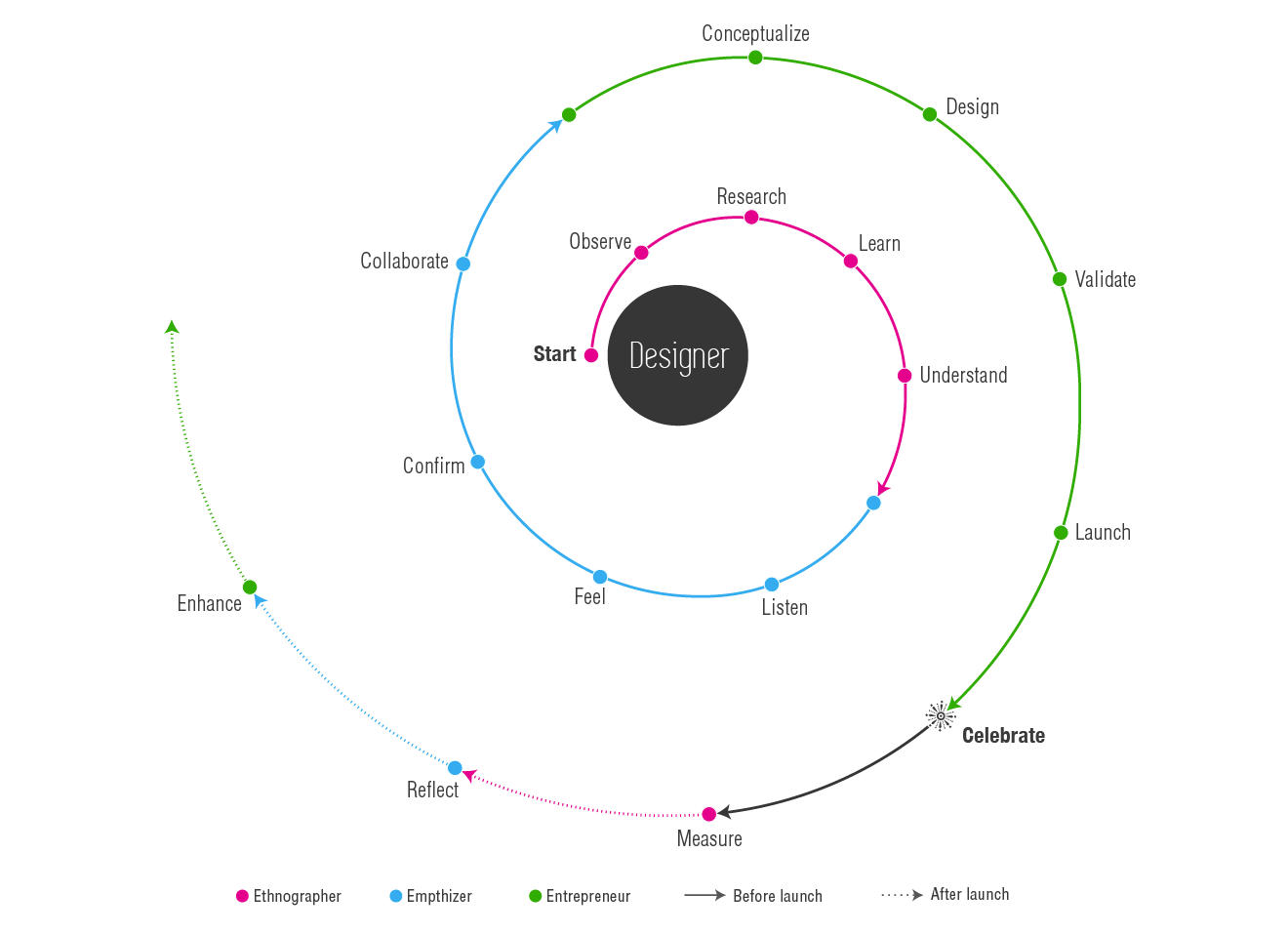Role of a Designer
de·sign·er
/dəˈzīnər/
noun
a person who plans the form, look, or workings of something before its being made or built, typically by drawing it in detail.
Circa 2017. The role of a designer has evolved and does not stop just before the product is built, rather it continues well beyond the launch for its critical contribution. In recent years, the designer has earned a seat at the business table as illustrated in this article from McKinsey. Here is their take on design and how it delivers business value.
What is design?
Like “strategy” and “analytics,” “design” is a term that suffers from misuse. Design is not just about making objects pretty. Design is the process of understanding customer needs and then creating a product or service — physical, digital, or both — that addresses their unmet needs. It sounds simple, but it’s actually a high bar: the design must simultaneously achieve functional utility, emotional connection, and ease of use, while fitting into customers’ broader experience.
Clearly, designers are not just pixel pushers. They are solving complex problems with simple easy to use solutions within a set of constraints. And to do this effectively, the designer has to wear different hats.
eth·nog·ra·pher
/eTHˈnäɡrəfər/
noun
a person who does a scientific study of the customs of individual peoples and cultures.
Observing the users and researching about their behavior, helps the designer to learn about their target audience.
em·pa·thizer
/’empəˌTHīzər/
noun
a person who understands and shares the feelings of another.
The designers have to understand and feel the customers’ pain. This empathy allows the designer to establish trust and strong relationship to collaborate on finding ideal solution.
en·tre·pre·neur
/ˌäntrəprəˈnər/
noun
a person who organizes and operates a business or businesses, taking on greater than normal financial risks in order to do so.
A design entrepreneur executes a solution that delivers the value while being sustainable and scalable (and therefore profitable) for its wider impact without compromising the user’ broader experience.
Here is my broad view of the various stages a designer goes through in delivering an ideal solution.

This linear process can give you a glimpse of what a designer does.
You can view the design process in more details to understand how each of these steps affect the various user roles, mediums and philosophies to gain insights that helps drive the ultimate solution.

